In collaboration with Khalid Saud – Alaamry
Over the years, there have been numerous conversations about the stock market, investment strategies, and the current landscape of opportunities. Many have asked about the rationale behind fund strategy, particularly exposure to Chinese equities, and the best approach to decision-making in such a complicated environment. These discussions have highlighted the importance of educating investors on how to think about the market—focusing on fundamentals, research, and a disciplined approach to investing.
This article intends to share insights on how to best evaluate investment opportunities, both within funds and as a general investment principle. Included are case studies and real-world examples to illustrate how to apply these principles, with a special focus on China, which is an undervalued market with strong upside potential. Aiming to guide how investors can make decisions based on data and facts rather than emotion or sentiment.
The Investment Philosophy
Alaamry Global Capital invests in exceptional companies trading below their intrinsic value. Businesses are targeted with:
- Competitive advantages
- Strong and capable management
- Prudent capital allocation
- Shareholder-friendly practices
Prioritising investing in companies with founder-led management teams. Some 85% of Alaamry Global Capital’s portfolio comprises companies where, on average, 30% of outstanding shares are held by insiders.
By purchasing such companies at discounted prices, margins of safety are created that protect against potential downside risks while maximising long-term returns.
These opportunities often arise during periods of economic uncertainty, industry challenges, or company-specific issues. Negative market sentiment and short-term panic drive stock prices below fair value, offering attractive entry points for long-term investors.
As Benjamin Graham wisely observed:
“Markets are a voting machine in the short term but a weighing machine in the long term”.
In today’s technology-driven world, average holding periods for stocks have dramatically declined from eight years in the 1950s to under six months. This short-term focus allows undervalued stocks to be capitalised, holding them through recovery for superior long-term returns.
Why Focus on China?
China, the world’s second-largest economy, offers an unparalleled investment opportunity. Despite achieving the “Chinese Miracle” with an average annual growth rate of 10% over three decades, its stock market remains significantly discounted.
The Hang Seng Index is at a Steep Drawn-Down Level
The Hang Seng Index, which peaked at 31,000 in 2021, has dropped 53% to lows of 14,687. This decline surpasses the 25% covid-19 crash and is comparable to the 57% drawdown during the Global Financial Crisis (GFC).
To put this into perspective, a similar performance in the S&P 500 would place it at around 1,928 points—three times cheaper than its current level of over 6,000. Such a decline would erase a decade of gains, much like the Hang Seng’s drop wiped out 15 years of returns.
Currently, the Hang Seng trades at roughly one-third the valuation of the S&P 500, presenting a compelling opportunity.
As Baron Rothschild famously said:
“The time to buy is when there’s blood in the streets.”
Price-to-Earnings Ratio Points to Great Valuations
Historically, the US market has experienced prolonged periods of flat or negative returns:
- Post-dot-com bubble (2000–2013): The S&P 500 took 13 years to recover to previous highs.
- 1969–1981: A stagnant period influenced by the 1974 oil embargo, the effects of which lasted 11 years.
Market recoveries after such downturns have been robust:
- 2013 to present: The S&P 500 climbed from 2,060 to over 6,000 (+291%).
- 1990 to 2000: The index rose from 720 to 2,770 (+385%).
The US market’s current price-to-earnings (PE) ratio is at 27, nearing dot-com bubble levels and nearly double its historical mean of 15.8. The Hang Seng Index PE is at 10, significantly below its 20-year average of 15.19.
The last time the US market PE ratio reached a level similar to the 10 of the Hang Seng was during the 2008 GFC. Since then, the S&P has delivered an impressive 878% return, or 15.6% annually (excluding dividends).
China’s stock market offers attractive valuations compared to the US. The low Hang Seng Index PE ratio signals the potential for a strong rebound. If the index reverts to its 20-year average, it could rise to 30,000, a 50% upside. A return to its historic high P/E of 21.2 would push the index above 40,000, offering a potential 100% upside.
As Warren Buffett wisely stated:
“Be fearful when others are greedy and greedy when others are fearful”
The Buffett Indicator Points to an Undervaluation of the Chinese Market
Warren Buffett’s preferred valuation metric, the Buffett Indicator, compares total stock market capitalisation to GDP.
- US Indicator: 2.09x GDP, higher than the 1.5x peak during the dot-com bubble and four times higher than the 0.5x low during the GFC.
- China ratio: 0.60x GDP.
This signals significant overvaluation in the US and makes China nearly 3.5 times cheaper.
Case study: Microsoft’s lost decade – low historical returns lay the foundation for high future returns
Microsoft’s “lost decade” (2000–2010) offers valuable insights to investors. During this period, despite strong fundamentals, the stock delivered zero returns for a decade due to valuation contraction:
- Price to earnings (PE) dropped from 70x to 8x.
- Price-to-sales (PS) ratio fell from 28x to 2.27x. From 2013 to 2024, Microsoft’s fundamentals kept improving, leading to significant rerating:
- Revenue/share grew 3.5x; EPS grew 8x.
- P/E expanded from 12x to 34.4x.
- Stock price rose from $27 (2013) to $420 (2024).
- Total return: 1,555%, or 28.3% annualized.
Here is a comparison of Microsoft’s share-price returns with the growth in its fundamentals over those two periods.
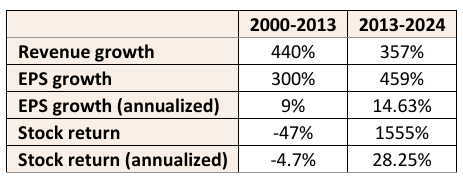
Microsoft’s fundamentals were strong in both periods, but stock returns varied due to valuation differences. This raises the question: Why do investors avoid low-valuation markets but flock to overvalued ones?
The takeaways from this case study:
- Value, price, and fundamentals all matter in the long run.
- Short-term price fluctuations mostly reflect the near-term sentiment of investors.
- Low historical returns lay the foundation for high future returns.
- Investors are generally irrational and guided by herd mentality. They are most comfortable buying with the crowd at market highs rather than being prescient but one of the few at market lows.
Warren Buffett’s quote is worth mentioning here:
“Price is what you pay, value is what you get”
The Magnificent Seven: the US market is more concentrated and expensive
The contrast between the US and Chinese Magnificent Seven is stark.

US stocks are approximately 5.50 times more expensive than their Chinese counterparts. Like Microsoft’s post-lost decade recovery, China’s large caps could experience similar rerating.
Insider Behaviour can Give the Game Away
Currently, insiders in US companies are happy to sell their stock knowing the shares are at all-time peak valuations. At the current S&P 500 level of 6,000, US insiders are selling stock in record volume.
This reinforces a consideration that the market in China is where the opportunity lies. If insiders do not have confidence in their own companies in the US, why should money be invested in their companies?
Fundamentals of our China Portfolio
Our China-based portfolio demonstrates compelling valuation and fundamentals:
Valuation
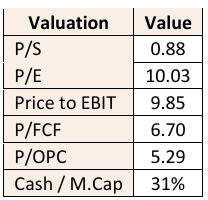
Probability Metrics
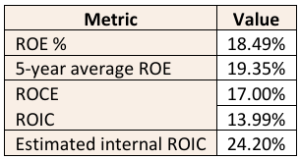
Capital Returns
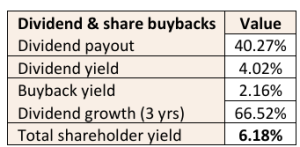
Fundamental Performance of the Company
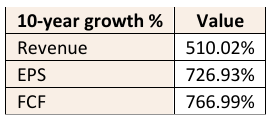
Conclusion
During a business trip to China, Khalid Saud met the CEO of a portfolio company who had grown his business into a multibillion-dollar enterprise with a 38-fold increase in free cash flow over a decade and a 10-year average ROE of 21.32%. Despite this success, his stock had dropped 60% from 2021 highs, leaving him puzzled and unhappy.
Assuring him that short-term market irrationality doesn’t negate strong fundamentals. Personal experience was utilised, and it was recounted how some of the stocks Alaamry owned had a drawdown of over 90% but they turned around eventually to become 10-baggers. Encouraging him that, as the CEO, he is best suited to determine his company’s health. It was later noticed, from the public filings, that he began personally buying back shares, demonstrating confidence in his company and alignment of interest with shareholders.
Investment Mission
A large focus is placed on amazing, founder-led companies with strong insider ownership and high returns on capital. These businesses are available at single-digit valuations—70% cheaper than their US counterparts.
If a company is twice as good as the average but priced at half the average, it could be viewed as a four-times better investment opportunity.
However, not every good company is a good investment & vice versa. At Alaamry Global Capital a balance of valuation and quality to achieve long-term returns is achieved.
Alaamry Global Capital Avoids:
- Short-term investing (day trading or predicting the next quarter’s results).
- Shorting or speculative price action.
- Predicting the economy or chasing fads.
- Investing in companies with questionable management integrity & disregard for shareholders’ interests.
- Investing in loss-making companies without proven track records.
While many fund managers avoid markets like China due to weak Market sentiment, Alaamry embraces long-term opportunities and invests using the company’s capital, aligning fully with their investors’ interests. With a focus on studying businesses minutely and investing only when stringent criteria are met. A guiding question is: Should this business be owned if the stock market was closed for the next 10 years? This long-term perspective helps ignore short-term price fluctuations.
Here you can read the Alaamry Global Capital Report.













 Bitcoin
Bitcoin  Ethereum
Ethereum  Tether
Tether  XRP
XRP  USDC
USDC  TRON
TRON  Lido Staked Ether
Lido Staked Ether  Cardano
Cardano  Avalanche
Avalanche  Toncoin
Toncoin  Solana
Solana